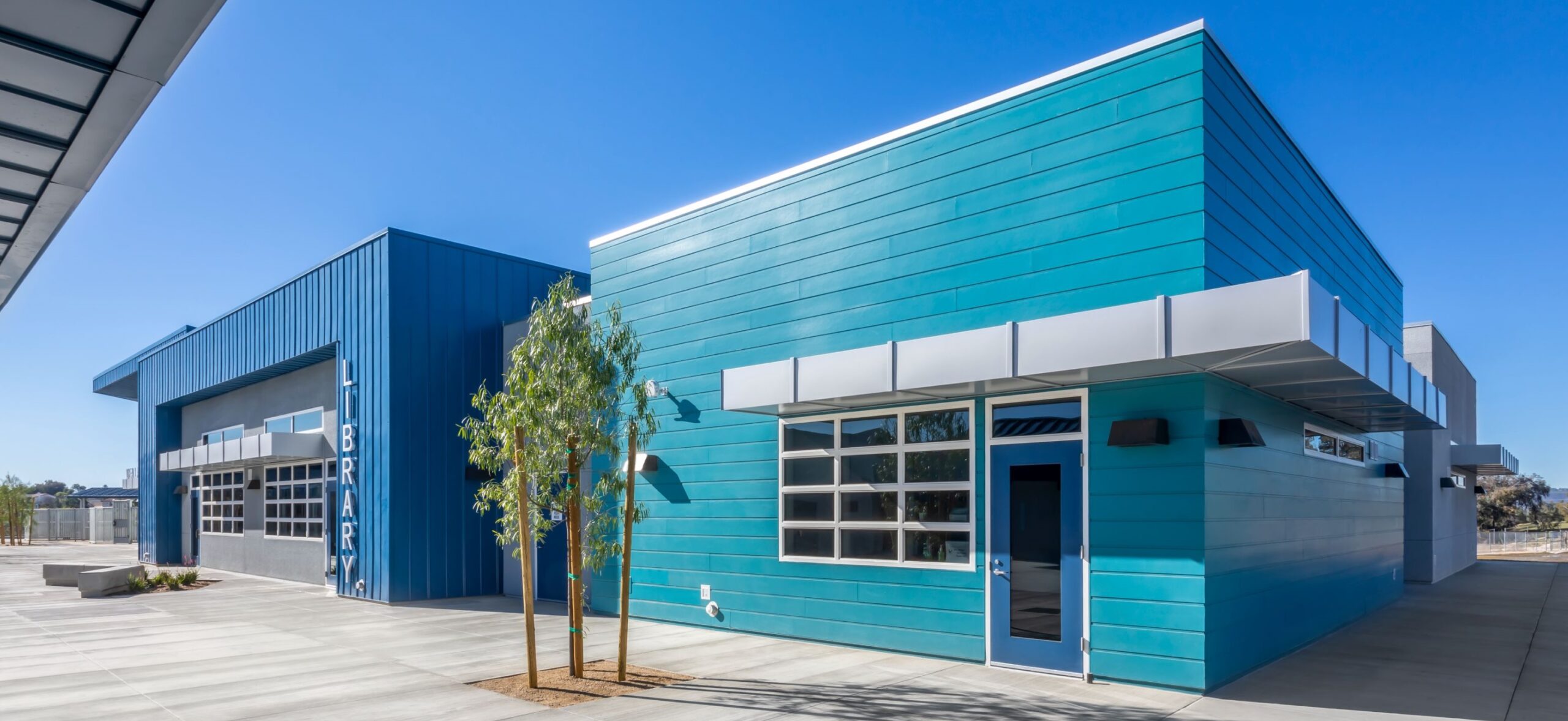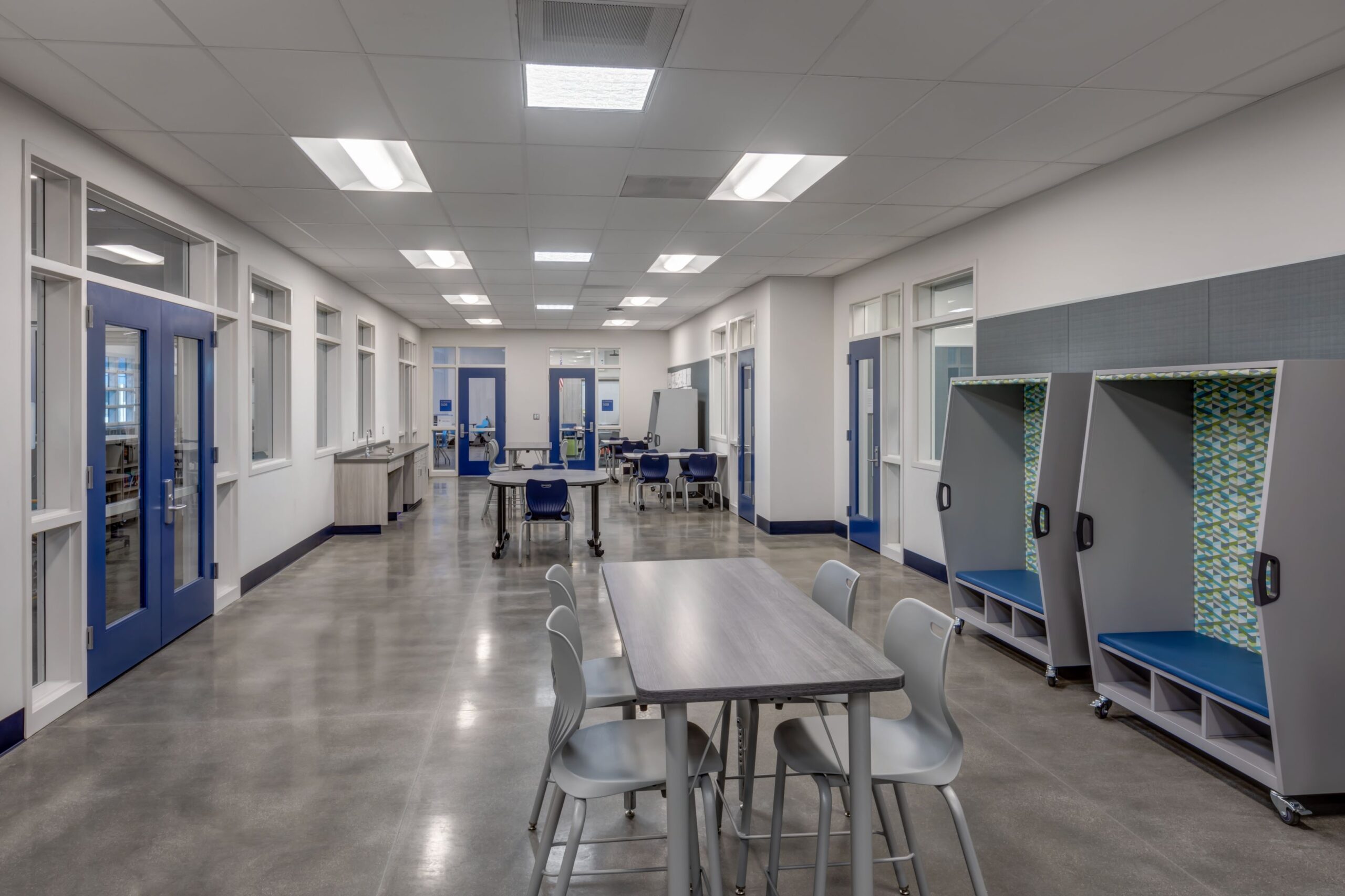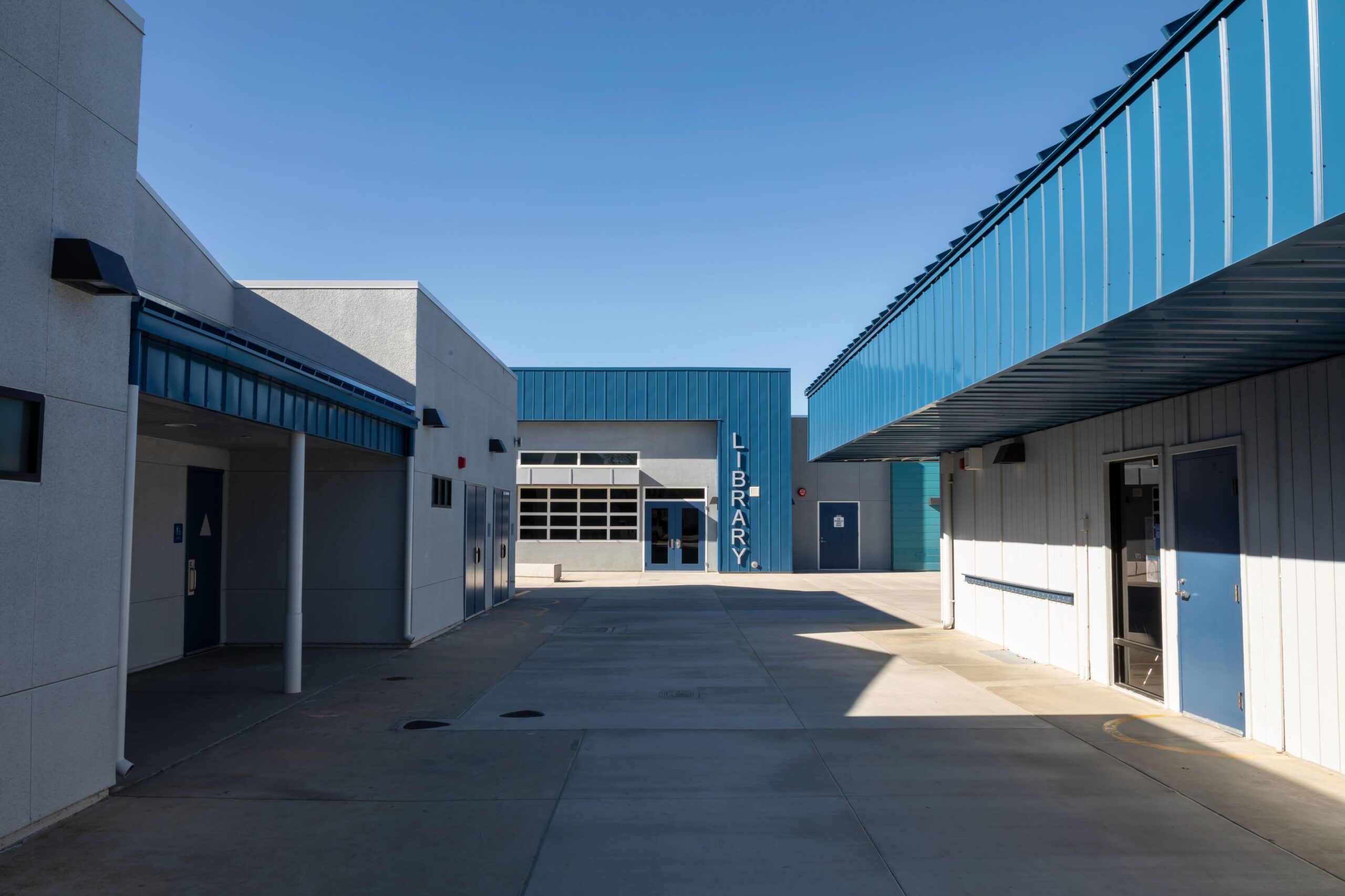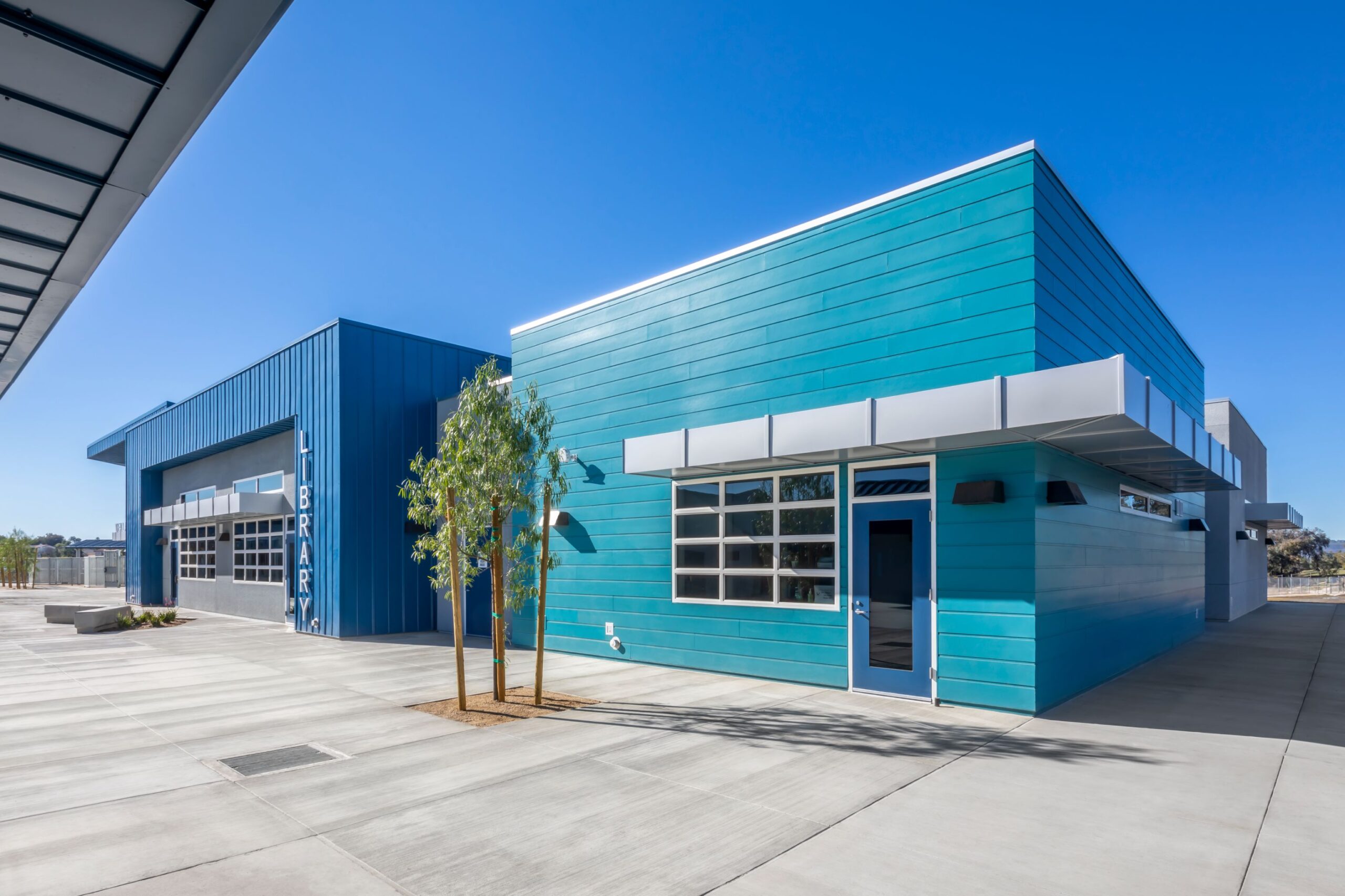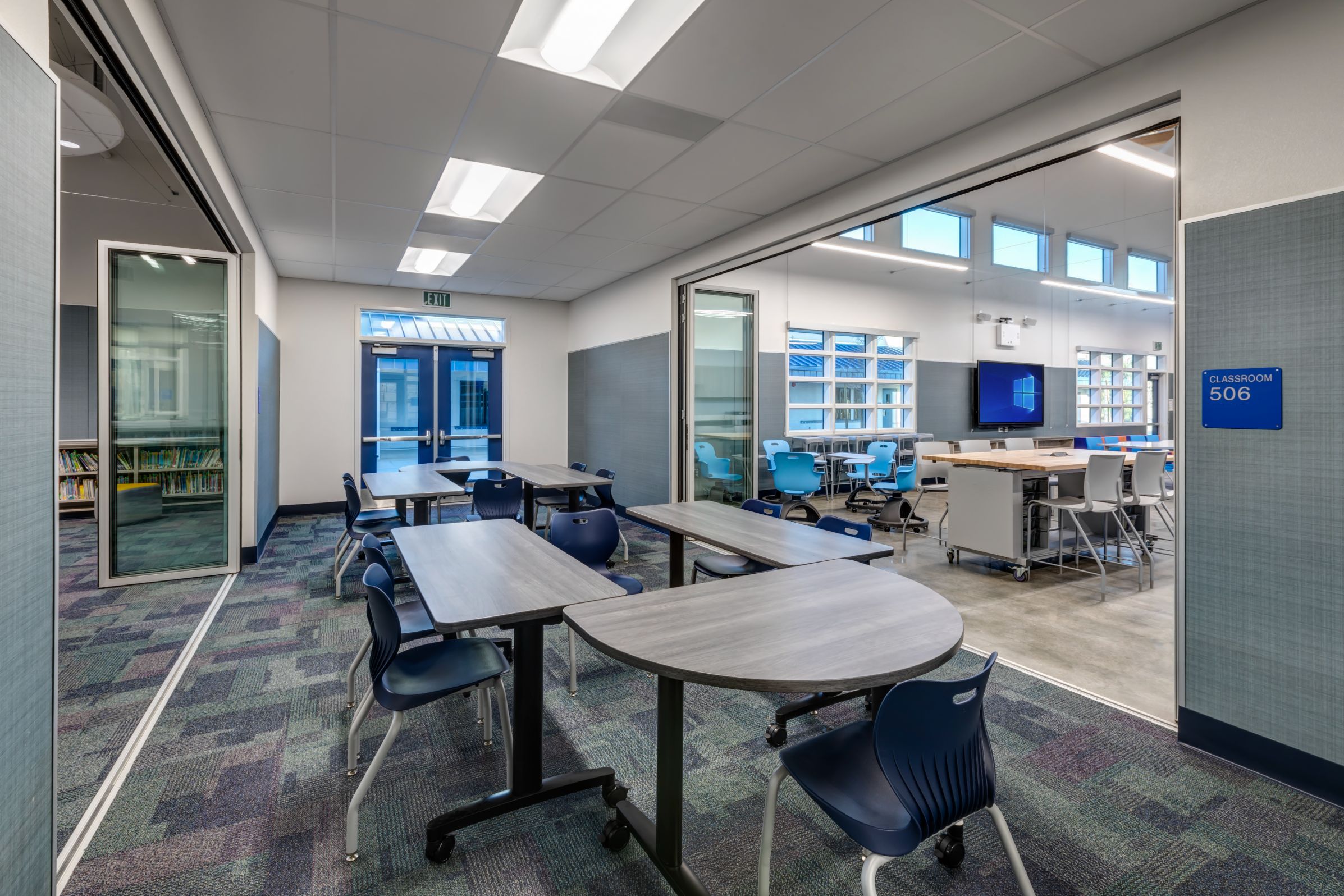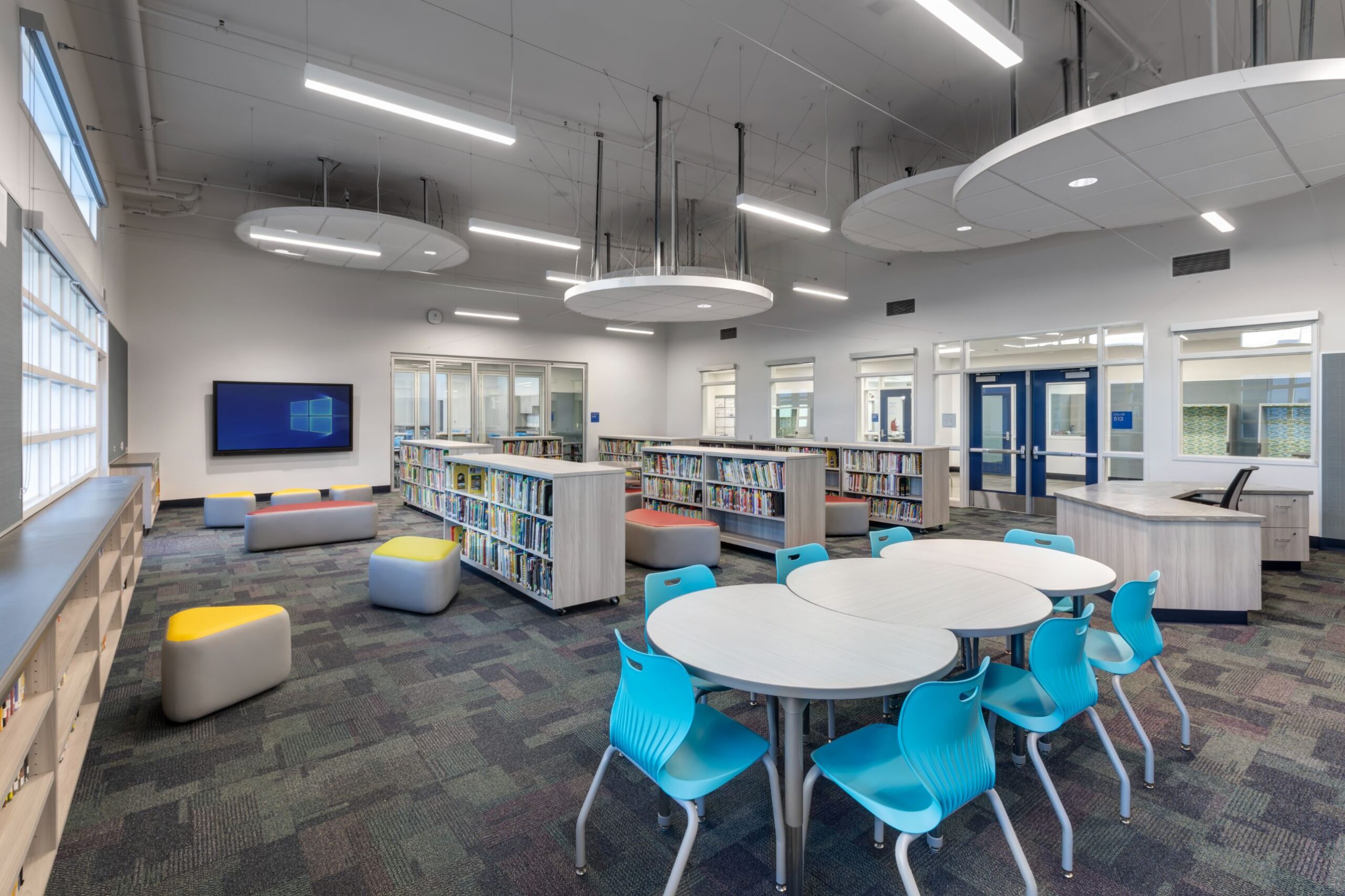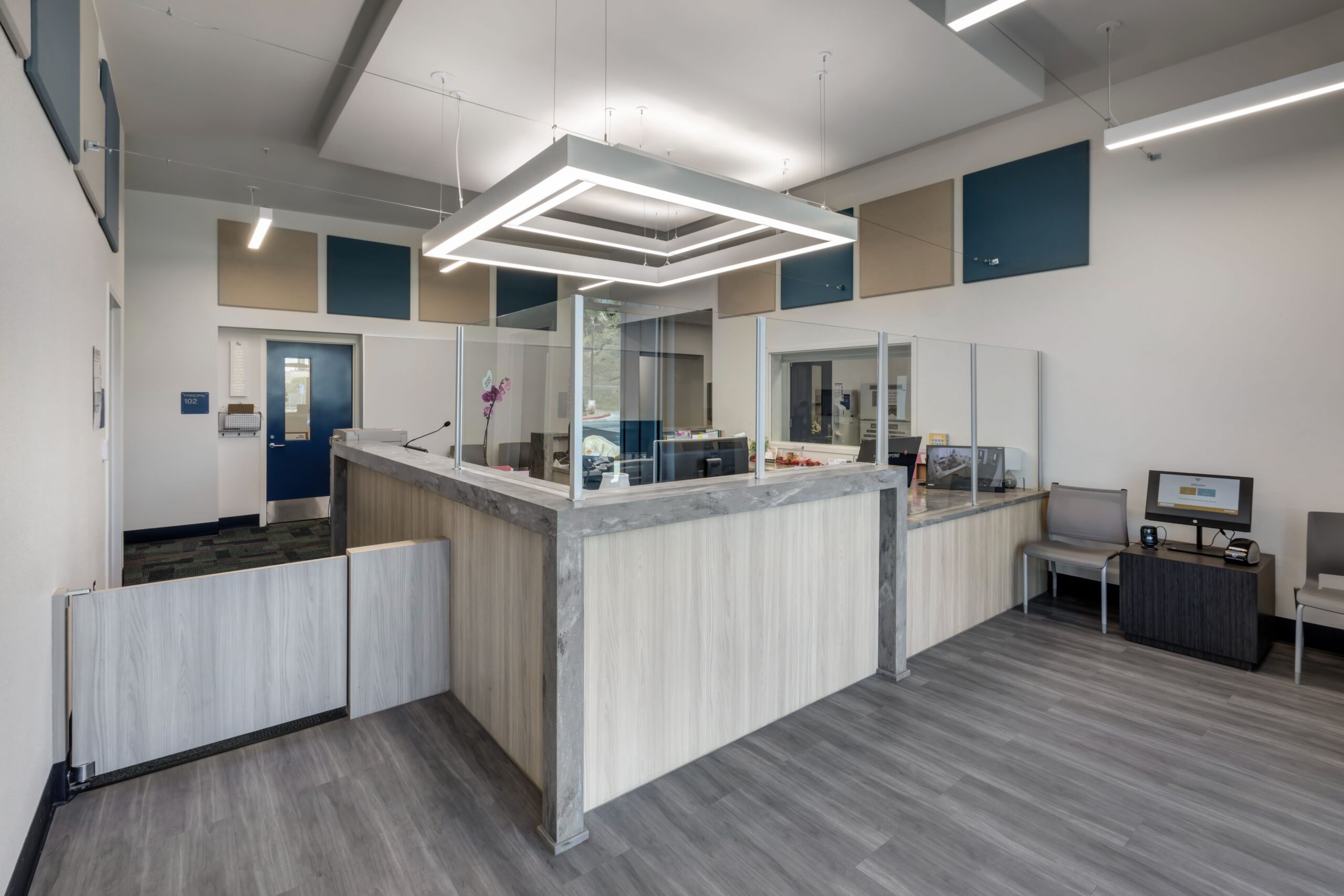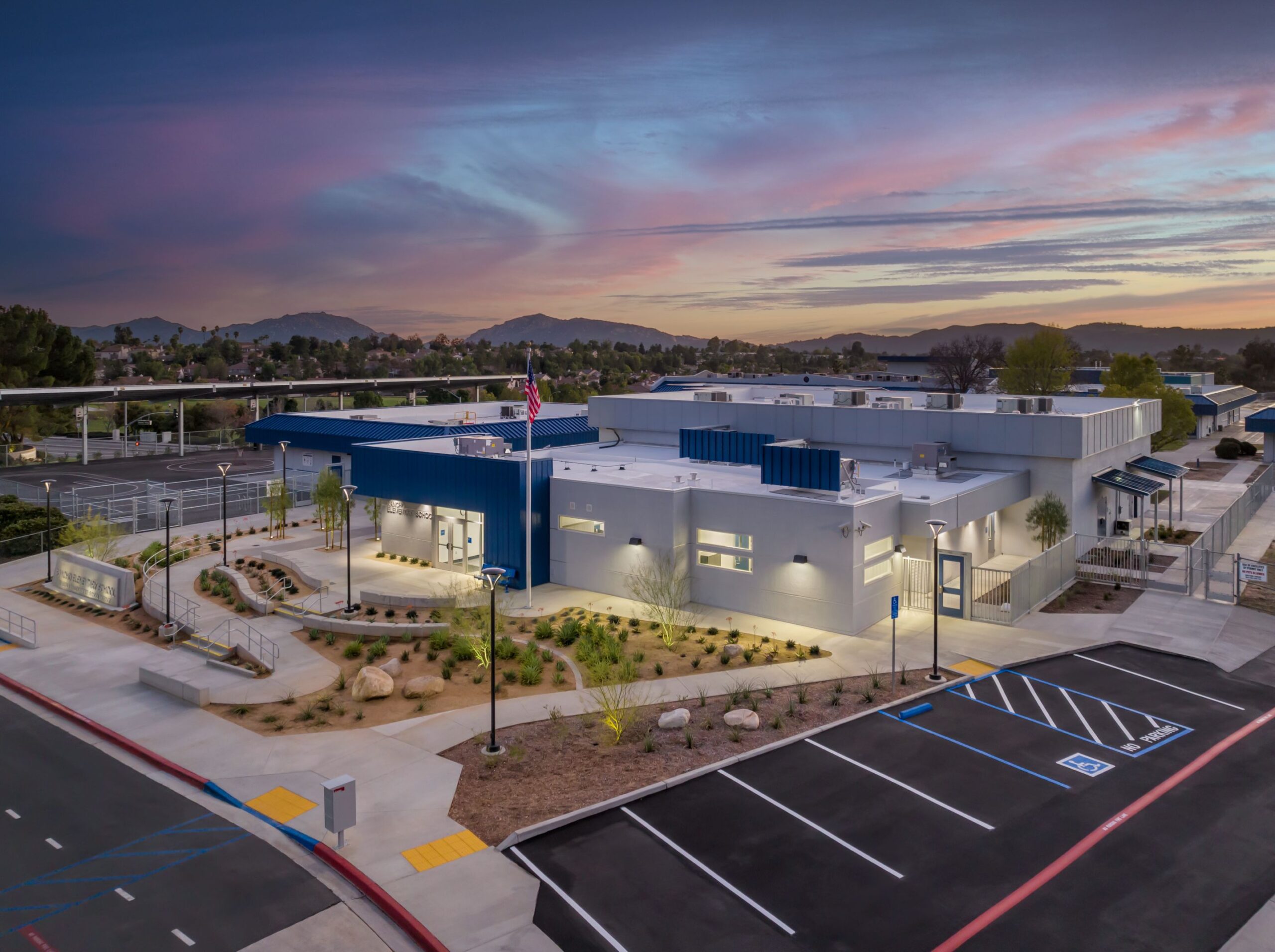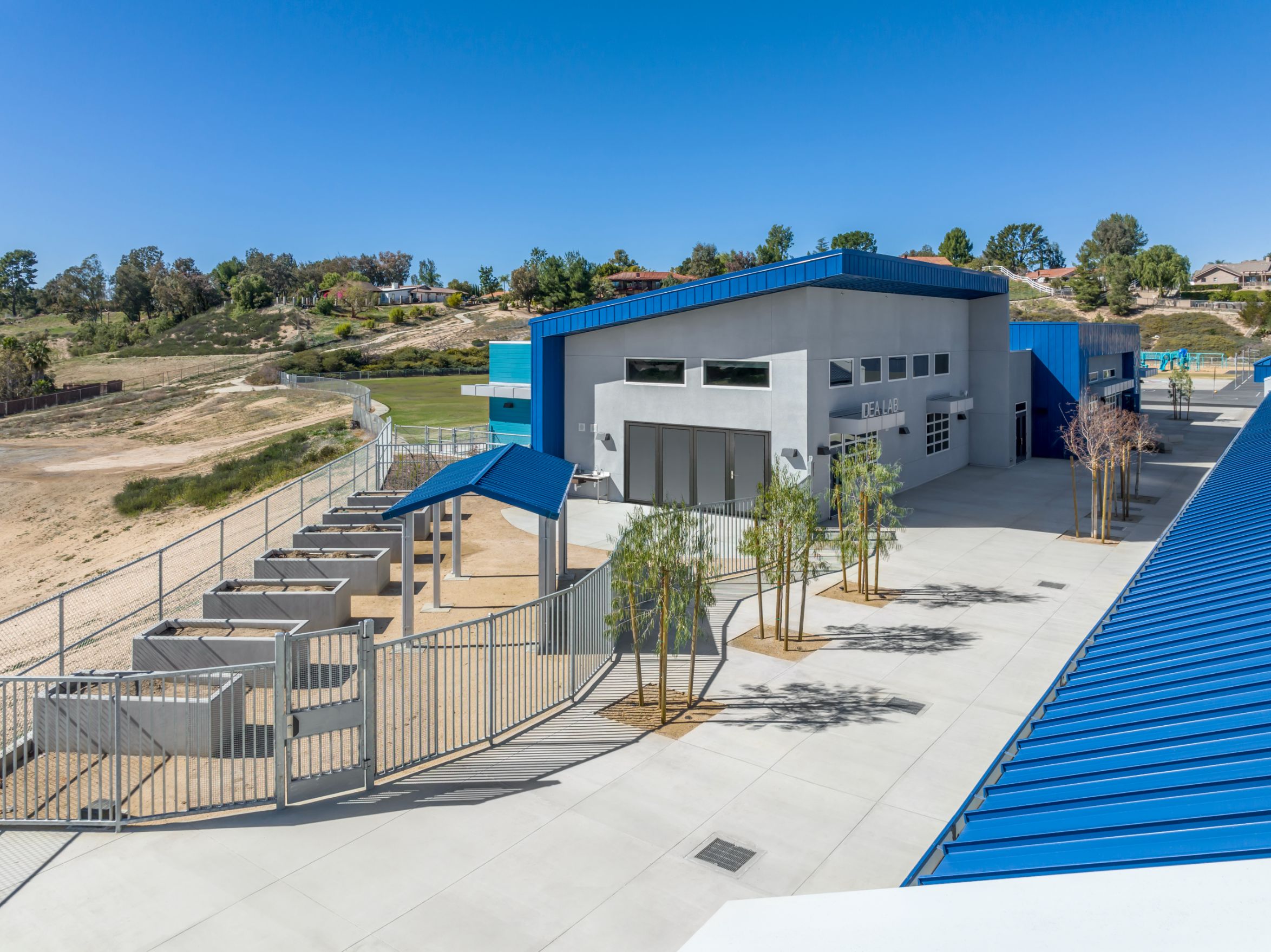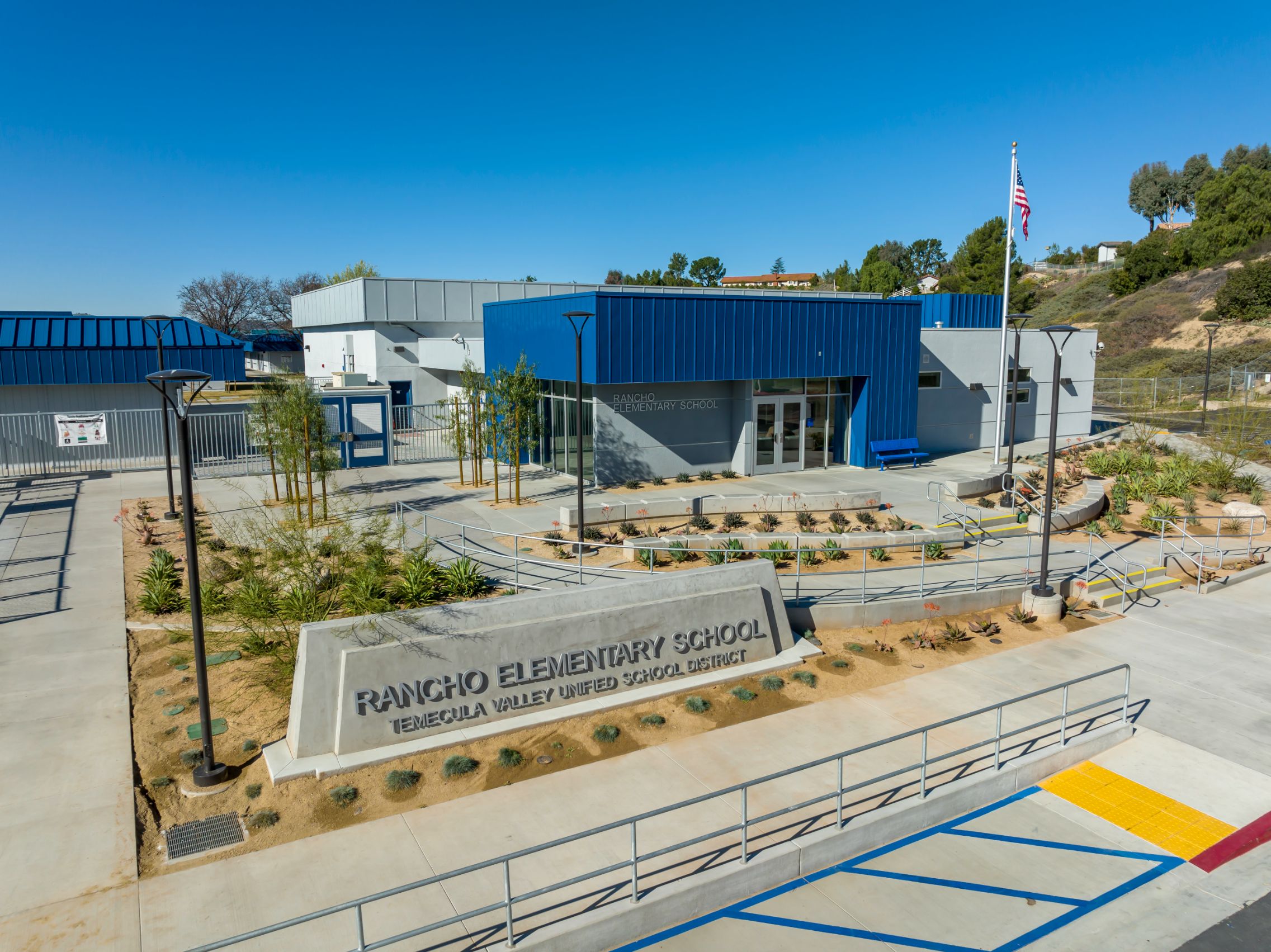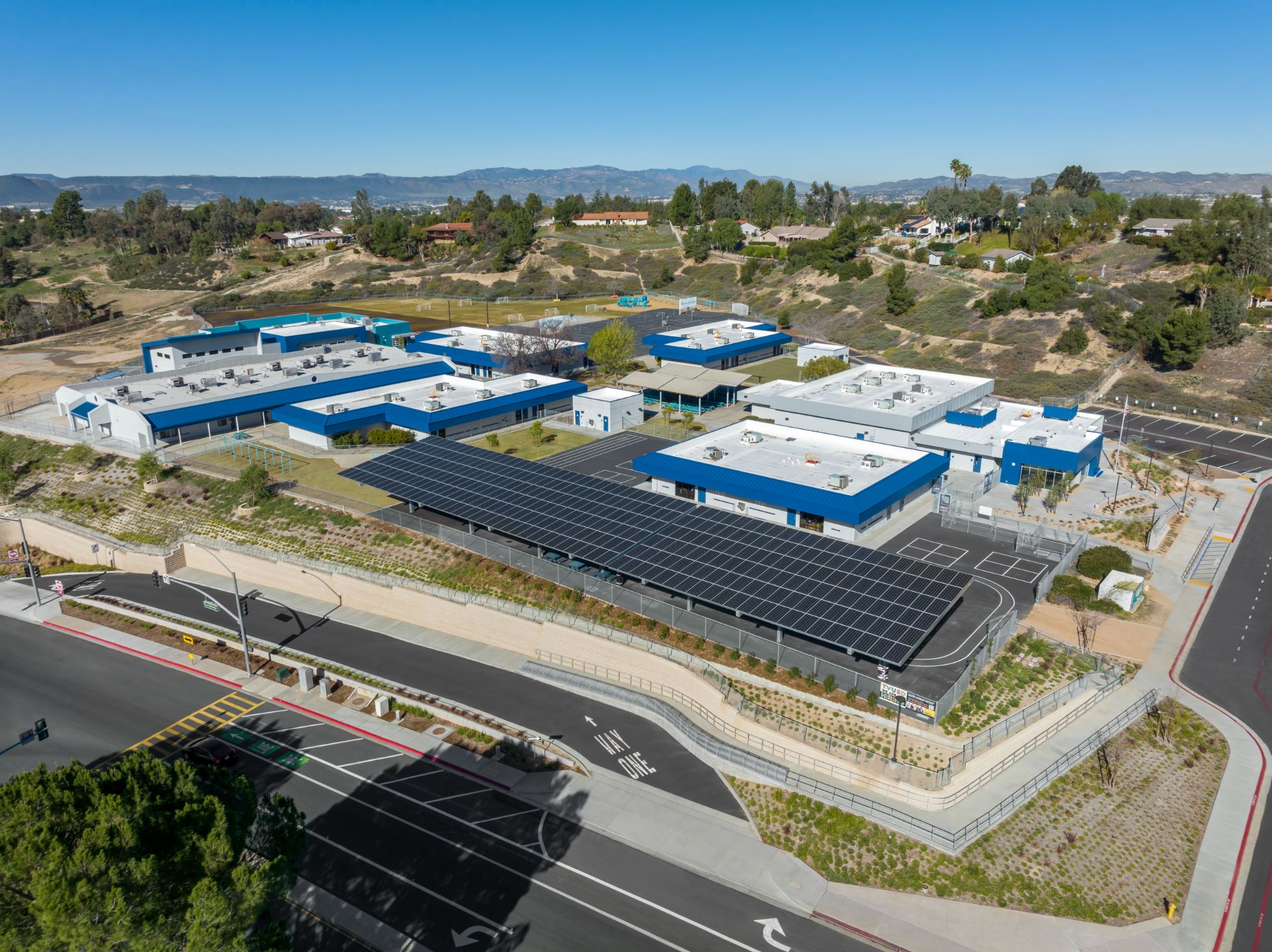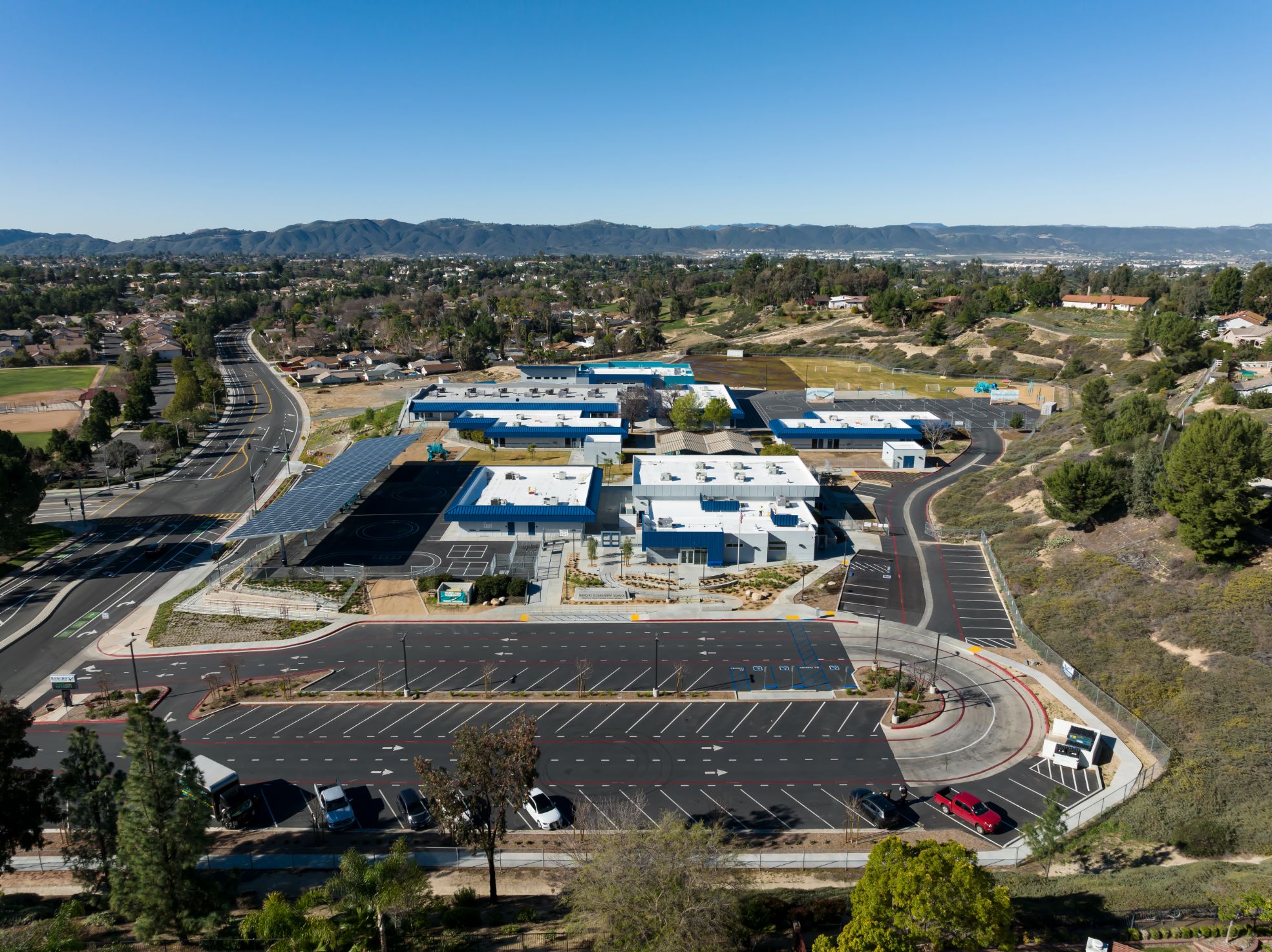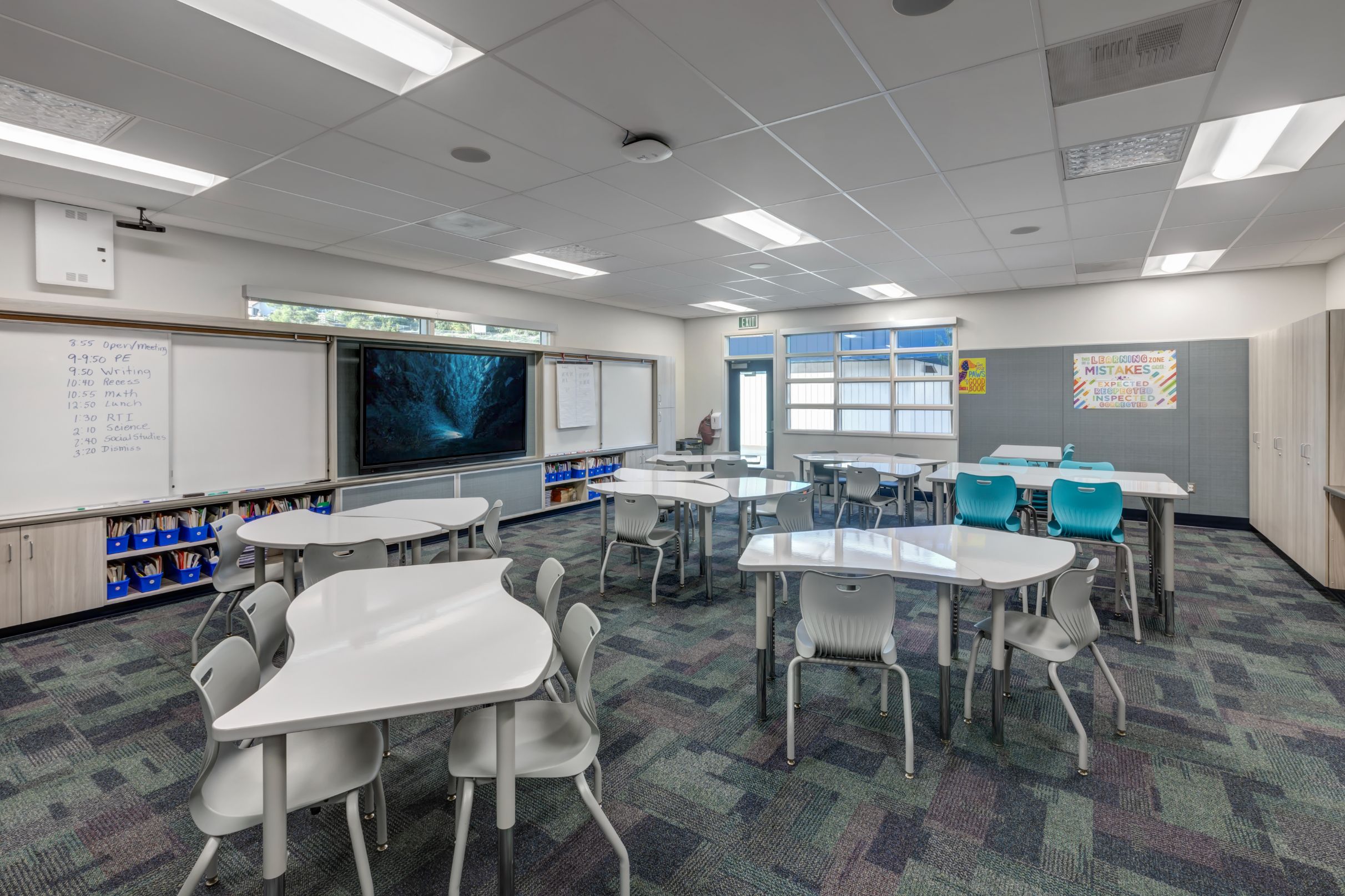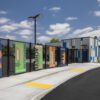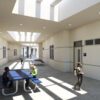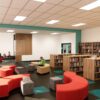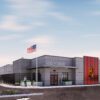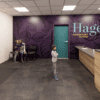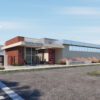Built in 1987 of an all-modular construction, Rancho Elementary School lacked identity, and was experiencing declining enrollment. SWC designed a comprehensive modernization and portable replacement. The new construction transformed this campus into a vibrant community school.
An addition to the administration building created a new welcoming face to the campus and improved program needs. Portables were replaced with a new building featuring a state-of-the-art library, six classrooms with interior collaboration spaces and an Idea Lab with direct access to an exterior learning garden.
The new building and administration addition were carefully sited as bookends, creating a central spine across campus.


